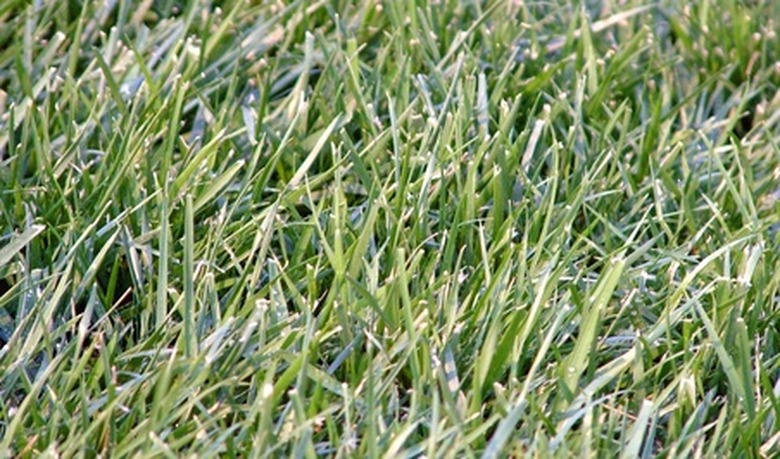Common Weeds In Bermuda Grass
Bermuda grass is a warm weather grass that stops growing when the soil temperature slips below 50 degrees F. Bermuda grass needs less water than other grass types but does well in warm weather areas that receive a lot of rain. Resistant to wear and compaction, Bermuda grass is used in lawns, parks, playing fields, golf courses and school grounds. Not tolerant of shade, Bermuda grass needs to be fertilized regularly. Common weeds found in Bermuda grass include annual, perennial and biennial weeds.
Annual Weeds
Annual weeds are weeds that live out their lives in one growing season. These weeds sprout in the spring or early summer. In the fall, they leave behind seeds that continue the cycle the next year. Annual summer weeds include broadleafs such as knotweed, pigweed, prickly lettuce, prostrate surge and lespedeza, according to North Carolina State University Cooperative Extension. Winter annual weeds, which are weeds that germinate in the fall and bloom in the early spring, include Virginia pepperweed, Southern plantain, common chickweed and pinnate tansymustard.
- Bermuda grass is a warm weather grass that stops growing when the soil temperature slips below 50 degrees F. Bermuda grass needs less water than other grass types but does well in warm weather areas that receive a lot of rain.
- Winter annual weeds, which are weeds that germinate in the fall and bloom in the early spring, include Virginia pepperweed, Southern plantain, common chickweed and pinnate tansymustard.
Weed grasses are bunching grasses that grow on Bermuda grass in clumps. Annual weed grasses include crabgrass, sandbur barnyard grass, goose grass and witch grass. Sedges look similar to grass but their stems are triangular and their leaves are arranged in threes. Annual nutsedge is a common weed found in Bermuda grass.
Perennial Weeds
Perennial weeds survive year after year by storing food reserves in their root systems, such as rhizomes, fleshy roots, bulbs or tubers. Perennial weeds spread though rhizomes, a creeping stem that lies underneath the soil; stolons, creeping stems that grow along or near the soil surface; and by seed, making perennial weeds very difficult to kill. These weeds are hardy and occasionally go dormant for part of the season. Perennial broadleaf weeds found in Bermuda grass include dandelion, mouse-ear chickweed, nimblewill, curly dock, ground ivy, field bindweed, yarrow, wild violet, white clover, yellow or red sorrel, broadleaf and buckhorn plaintain, dogfennel, Southern fleabane and yellow nutgrass, according to the University of Arkansas.
- Weed grasses are bunching grasses that grow on Bermuda grass in clumps.
Perennial clumping weed grasses include tall fescue, dallis grass, smutgrass, nimblewell and Johnsongrass. Perennial sedges include hurricane grass, yellow nutsedge and purple nutsedge. Yellow and purple nutsedge are a common weed found on Bermuda grass golf courses.
Biennial Weeds
Biennial weeds have a two-year life cycle. The first year is the growing year. The weed then goes dormant over the winter. During the second year, seeds are produced and spread, although certain biennials also reproduce through rhizomes and stolons. Their growing cycle is similar to annuals, according to the Texas Agriculture Extension Service. Biennial weeds include mallow, Canada thistle and wild carrot, which is also known as Queen Anne's Lace.
- Perennial clumping weed grasses include tall fescue, dallis grass, smutgrass, nimblewell and Johnsongrass.
- During the second year, seeds are produced and spread, although certain biennials also reproduce through rhizomes and stolons.
